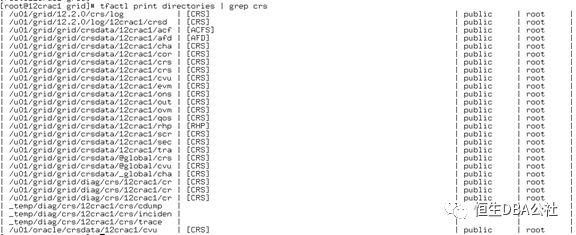
This allows a cache to be maintained over a long period without it going out of control. The difference is that it only removes package files that can no longer be downloaded, and are largely useless. Like clean, autoclean clears out the local repository of retrieved package files. It removes everything but the lock file from /var/cache/apt/archives/ and /var/cache/apt/archieves/partial/. apt cleanĬlean clears out the local repository of retrieved package files. The only thing you should watch for, is if you started using one of the dependencies say “Python” but never actually installed it yourself then it will be removed. If you remove apache, all these libraries will be left behind until you run autoremove.
TFACTL AUTOPURGE INSTALL
Say that you install apache, it will install a lot of libraries. In other words, it will only goes through the catalog and remove any left over packages that were not directly installed and that are not required by packages that are installed. apt autoremoveĪutoremove is used to remove packages that were automatically installed to satisfy dependencies for other packages and are now no longer needed. Note that other tools like aptitude will only remember dependency information for packages that it has installed.
There is no easy way to get those removed as well. However, purge won’t touch configuration or data files inside the user’s home folder (e.g. It will remove about everything regarding the package, but not the dependencies installed with it on installation, which is particularly useful when you want to “start all over” with an application because you messed up the configuration. Purge is identical to remove except that packages are removed and purged (any configuration files are deleted too).

It will remove the binaries, but leave configuration files, data files, and dependencies installed with it on installation time untouched. Remove is identical to install except that packages are removed instead of installed. The differences between the command you metioned are described as follows. Searching out ORACLE_HOME for selected databases. No Grid Infrastructure Discovered on this system. Would you like to do a ocal only or lusterwide installation ? : L TFA Version: 183300 Build Date: 201810050542Įnter a location for installing TFA (/tfa will be appended if not supplied) : 1 root root 267M Oct 5 23:39 installTFA-LINUX If you have enable private network tracing for RAC, contains information about the status of the private networks.Ĭontains a listing of the contents of /proc/slabinfo.Ĭontains output from the vmstat tfa]# ls -lrth OSWbb collects data in the following directories under the oswbb/archive directory:Ĭontains a listing of the contents of /proc/meminfo.Ĭontains output from the netstat utility. For testing purpose, we printed vmstat file output. To check any data, just navigate to corresponding directory and view the corresponding file.
TFACTL AUTOPURGE ARCHIVE
OSWbb stores data in hourly archive files named system_name_utility_name_timestamp.dat, and each entry in a file is preceded by the characters *** and a timestamp. To View The Collected DataĬollected data will be stored under archive directory, it is created when OSWbb is started for the first time. To stop OSWbb permanently, run the stopOSWbb.sh script from the oswbb directory. Oswbb heartbeat:Sat Oct 27 01:42:57 IST oswbb]# oswbb]# Requests you can email me is stored in directory: /u01/app/irfan/product/12.2.0/dbhome_1/oswbb/archive If you need further assistance or have comments or enhancement OSWatcher - Written by Carl Davis, Center of Expertise,įor questions on install/usage please go to MOS (Note:301137.1) Starting OSWatcher v8.1.2 on Sat Oct 27 01:41:

Setting the archive log directory to/u01/app/irfan/product/12.2.0/dbhome_1/oswbb/archiveĬPU CORE COUNT will be used by oswbba to automatically look for cpu problems Info.You did not enter a value for archiveInterval. Info.You did not enter a value for snapshotInterval. To start OSWbb, run the startOSWbb.sh script from the oswbb directory.

Package ksh-20120801-37.el6_9.x86_64 already installed and latest version Loaded plugins: refresh-packagekit, security If the ksh package is not already installed on your system, use yum to install db_1]# yum install ksh.Copy the file to the directory where you want to install OSWbb, and run the following db_1]# tar -xvf db_1]#.
TFACTL AUTOPURGE DOWNLOAD
Download the file oswbb601.tar, which is available at.


 0 kommentar(er)
0 kommentar(er)
